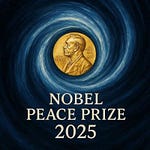When the Ukrainian and Russian delegations meet in Istanbul later today (May 15), territory — and who controls it — will be high on their agenda.
The meeting, when it happens, will have come about after the Russian president, Vladimir Putin, offered to start direct talks between Moscow and Kyiv at a press conference on May 11.
Donald Trump, the American president and want-to-be peacemaker, pushed Volodymyr Zelensky, his Ukrainian counterpart, to accept this offer in a social media post, saying that "Ukraine should agree to this, IMMEDIATELY."
And the Ukrainian president, still buoyed by a meeting with the British, French, German, and Polish leaders that called for an unconditional 30-day ceasefire, agreed shortly afterwards.
In the build-up to the possible resumption of direct negotiations, there was some hope that all three presidents — Putin, Zelensky, and Trump — would meet, but this has now apparently been ruled out, indicating that no breakthrough towards an actual peace deal is expected.
This is hardly surprising, given that Moscow’s and Kyiv’s negotiating positions still lie far apart. Russia has made it clear that it wants to focus on the so-called Istanbul communique of March 2022 and a subsequent draft agreement negotiated but never adopted by the two sides in April 2022.
The 2022 negotiations were mostly about Ukrainian neutrality and security guarantees, and they deliberately excluded the status of Crimea by relegating its resolution to separate negotiations with a 10-15 year timeframe.
When Russia additionally mentions what it calls “the current situation on the ground”, this is thinly-disguised code for territorial questions that have become more contentious over the past three years as a result of Russian gains on the battlefield and the illegal annexation of four Ukrainian regions in September 2022 (in addition to Crimea, which Russia annexed also illegally in 2014).
Russia's position, as articulated most recently by the country's foreign minister, Sergey Lavrov, is that "the international recognition of Crimea, Sevastopol, the DPR, the LPR, the Kherson and Zaporozhye regions as part of Russia is ... imperative."
This is clearly a non-starter for Ukraine, as repeatedly stated by Zelensky, even though there might be some flexibility on accepting that some parts of sovereign Ukrainian territory are under temporary Russian control, as suggested by Trump's Ukraine envoy, Keith Kellogg, and Kyiv's mayor, Vitali Klitschko.
The territories that Russia currently occupies — and claims — in Ukraine have varying strategic, economic, and symbolic value for Moscow and Kyiv. The areas with the greatest strategic value include Crimea and the territories on the shores of the Sea of Azov, which provide Russia with a land corridor to Crimea.
The international recognition of Crimea as part of Russia, as apparently suggested under the terms of an agreement hashed out by Putin and Trump's envoy Steve Witkoff, could expand Russia's de jure control of the Black Sea, which could then be used by the Kremlin as a launchpad for renewed attacks on Ukraine. Such extended maritime control would also threaten NATO's eastern flank in Romania and Bulgaria.
Any permanent recognition of Russia's de-facto control of these territories is, therefore, unacceptable for Ukraine and its European partners.
Compared with Crimea and the Kherson and Zaporizhzhia regions along the Sea of Azov, the regions of Donetsk and Luhansk are of lower strategic value. However, there is a certain economic value in all four regions on Ukraine's mainland.
This includes, in the long term, the mineral resources on which the US and Ukraine concluded a separate deal on April 30. While there is considerable doubt over how good a deal this is, the resource potential of the Russian-occupied territories is substantial, including Europe's largest nuclear power plant in Zaporizhzhia. In addition, the four occupied regions boast a substantial labour force among their estimated population of between 4.5 million and 5.5 million people who will be critical to Ukraine's post-war reconstruction.
Beyond the strategic and economic value of the illegally occupied territories, the symbolism that both sides attach to their control is the most significant obstacle to any deal, given how irreconcilable Moscow's and Kyiv's positions are. For both sides, control of these territories, or loss thereof, is what defines victory or defeat in the war.
Putin may be able to claim that even partial territorial gains in Ukraine since the start of the full-scale invasion in February 2022 short of full control of all four regions are a victory for Russia. But even for him any compromise that would see Russia give up territory that it has conquered — often at exceptionally high cost — would be a risky gamble for the stability of his regime.
For Ukraine, anything less than the complete restoration of the country's territorial integrity in its 1991 borders would imply recognition of defeat in the war. This would critically threaten the stability of the Zelensky government, whose political programme rests on exactly the premise of a return to the 1991 borders.
As a result, the Ukrainian leadership has become hostage to its own information strategy, which has placed the “return of all territories” at the top of the criteria for victory in the war. Although hard to achieve and easy to measure, this is a goal widely shared among Ukrainians, according to a poll conducted by the Razumkov Center in March 2025.
Apart from the potential domestic fall-out from any territorial compromises that Ukraine may be forced to make, there is another reason why the territorial question has become so intractable.
Beyond any strategic, economic, and symbolic value that the currently illegally occupied Ukrainian territories hold from the Kremlin's perspective, control over territory has always be an instrument for Russia to pursue its broader geopolitical agenda of exercising influence over its neighbours — from Moldova, to Georgia, Armenia, and Ukraine.
In the case of Ukraine, it is also important to remember that Russia's territorial claims have gradually expanded since 2014. Until September 2022, when it annexed the other four regions, Russia laid claim to Crimea only. There is no guarantee that any territorial concession from Kyiv now would put a permanent end to Moscow's territorial expansionism. It is therefore worrying that Trump envoy Witkoff, in an interview with Breitbart news, reiterated the US view that the two sides need to find compromises on who controls which territories.
Russia's aggression against Ukraine was not a war over territory as such but was part of Moscow’s agenda to restore the sphere of influence that it lost at the end of the cold war. This agenda is far from finished.
Focusing on territorial compromises, which seems to be the strategy of both Moscow and Washington, may lead to a ceasefire, but it will not address the fundamental issue of how to deal with a vengeful and revisionist autocracy on Europe's doorsteps.
An earlier version of this analysis was published by The Conversation on May 14, 2025.
We hope you'll share Navigating the Vortex with anyone you think might find it of interest. Also, you can listen to our podcast editions via the website and on all major podcast platforms, including:












